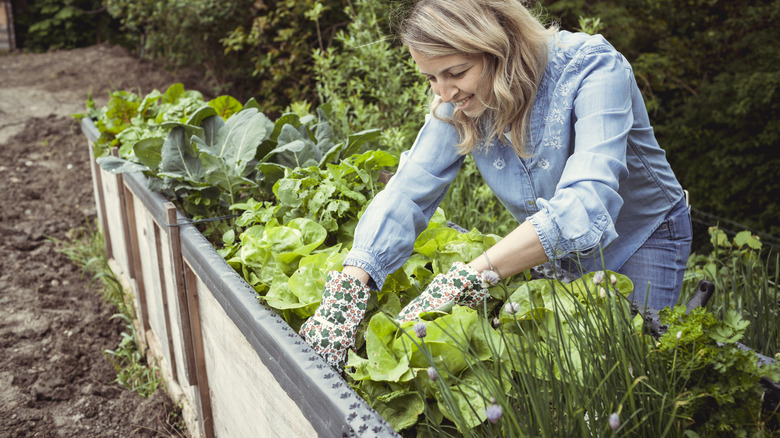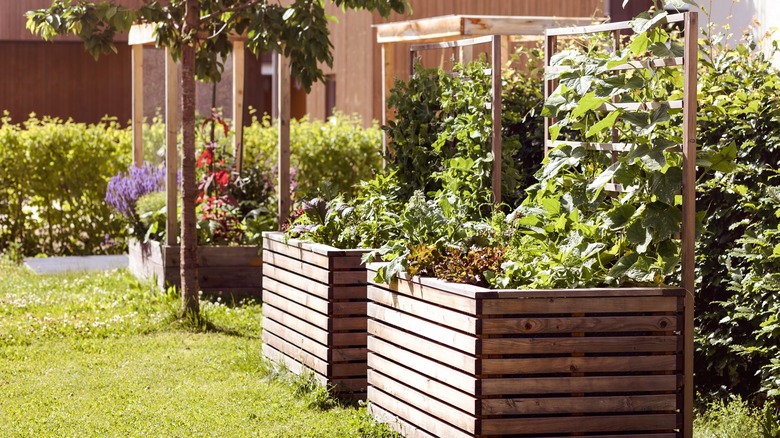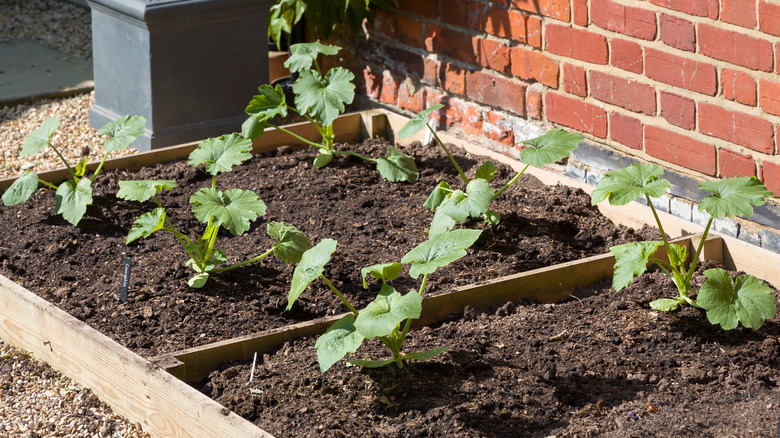How To Determine How Deep Your Raised Garden Bed Should Be
Nowadays, many dream of growing enough food at home to be self-sufficient. Creating a garden allows you to produce only what you and your family really like. It also gives you control over which pesticides do or don't go into the fruits and vegetables you eat. An easy way to garden at home is by using raised beds. Since the soil sits on top of the ground, raised beds allow you to easily access your produce.
Your raised beds should be a certain depth to produce healthy crops, but how deep should they be exactly? The short answer is that they must be deep enough for your crop roots to fit comfortably and thrive without issues. This will translate into a healthy garden that produces lots of fruit. The recommended depth for a raised garden bed is typically 20 inches of soil for most vegetables, bushy fruits, or flowering plants. However, there are certain instances where plants may need more space or could thrive with less.
How deep should raised garden beds be?
How deep or shallow a raised bed should be will depend on what crops you're growing. For example, to grow vegetables like lettuce, cabbage, or peas, you'll need 12 to 18 inches of soil. If you want to grow carrots, peppers, or kale, your raised bed should be 18 to 24 inches deep. To grow tomatoes, alfalfa, or okra, your raised beds should be up to 36 inches deep in order to fit their root systems. To determine how much space your plant needs, find out if they are shallow, medium, or deep-rooted.
There are also a few other things to consider, including your comfort and physical abilities. This depends upon whether you want to crouch, lean, or stand upright while harvesting. Further, if you have a limited budget, consider building low garden beds instead of tall ones to cut expenses on soil, tools, and wooden frames. Also keep in mind that, if your plants need lots of root space, dig deep enough in the ground to remove any big rocks or tree roots.
Tips for a better raised bed
If you want your raised beds to be extra long or high enough to harvest while standing up, consider adding cross-supports, which can be made out of wooden boards, plastic, or aluminum pipes. These cross-supports run across the middle of the raised bed, connecting the longer sides. They will create a stronger structure that can hold the weight of the water and soil within, preventing your bed frames from flexing.
Additionally, consider tilling your soil to loosen up any clumps and make mixing different soils and compost easier. Tilling will also add more depth to in-ground raised beds, allowing plants to spread their roots deeper and get all the water and nutrients they need. Also, there's no such thing as a raised bed that's too deep, as the deeper it is, the better the plants will grow. Having endless space for plants to develop their root system is always a plus when gardening.


